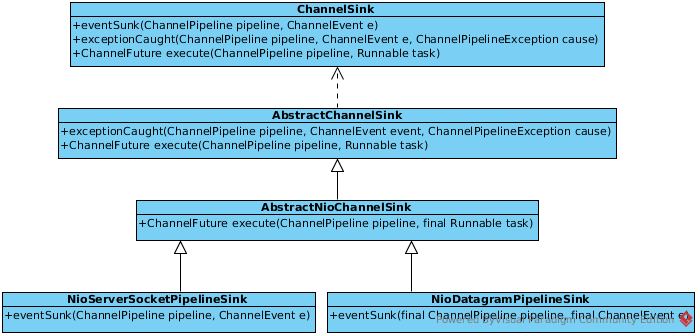Netty main API
This documents list a series of netty api UML diagrams:
NioServerSocketChannelFactory
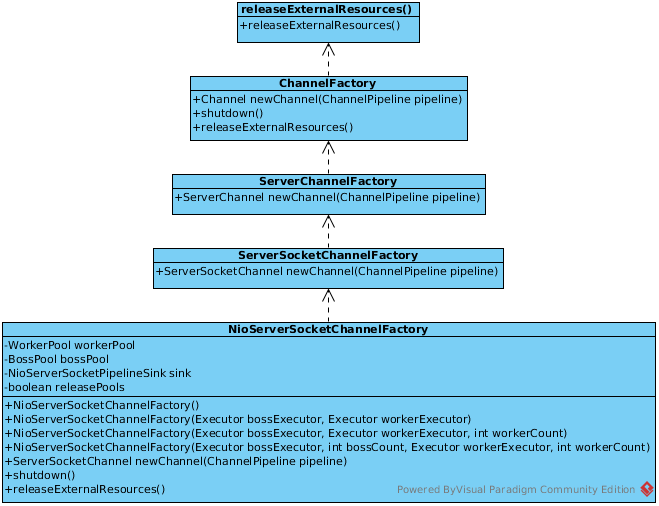
org.jboss.netty.channel.socket.nio.NioServerSocketChannelFactory which creates a server-side NIO-based ServerSocketChannel. It utilizes the non-blocking I/O mode which was introduced with NIO to serve many number of concurrent connections efficiently.
How threads work
There are two types of threads in a NioServerSocketChannelFactory: one is boss thread and the other is worker thread.
Boss threads
Each bound ServerSocketChannel has its own boss thread. For example, if you opened two server ports such as 80 and 443, you will have two boss threads. A boss thread accepts incoming connections until the port is unbound. Once a connection is accepted successfully, the boss thread passes the accepted Channel to one of the worker threads that the NioServerSocketChannelFactory manages.
Worker threads
One NioServerSocketChannelFactory can have one or more worker threads. A worker thread performs non-blocking read and write for one or more Channel in a non-blocking mode.
Life cycle of threads and graceful shutdown
All threads are acquired from the Executor which were specified when a NioServerSocketChannelFactory was created. Boss threads are acquired from the bossExecutor, and worker threads are acquired from the workerExecutor. Therefore, you should make sure the specified Executor are able to lend the sufficient number of threads. It is the best bet to specify Executors.newCachedThreadPool() a cached thread pool.
Both boss and worker threads are acquired lazily, and then released when there’s nothing left to process. All the related resources such as Selector are also released when the boss and worker threads are released. Therefore, to shut down a service gracefully, you should do the following:
- unbind all channels created by the factory
- close all child channels accepted by the unbound channels, and(these two steps so far is usually done using ChannelGroup.close())
- call releaseExternalResources()
Please make sure not to shut down the executor until all channels are closed. Otherwise, you will end up with a RejectedExecutionException and the related resources might not be released properly.
NioServerSocketChannel
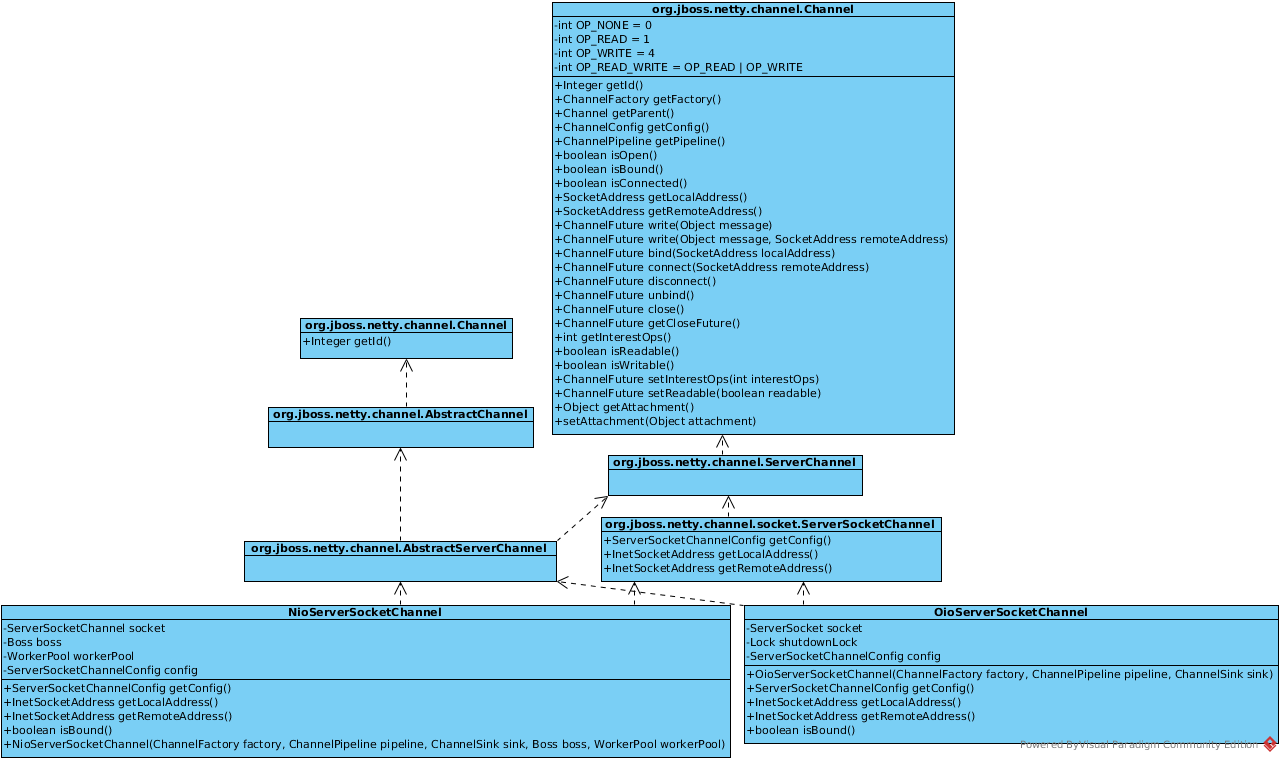
NioWorkerPool
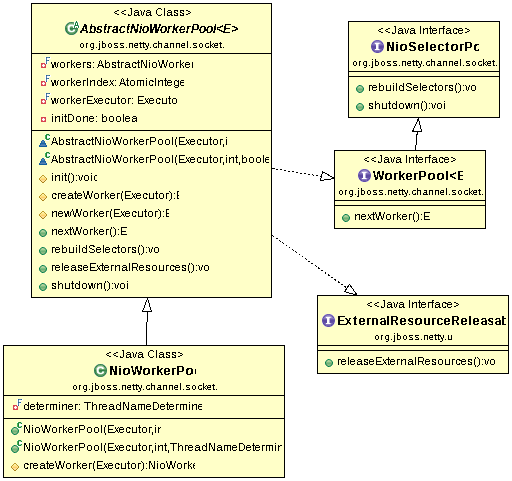
NioServerBossPool
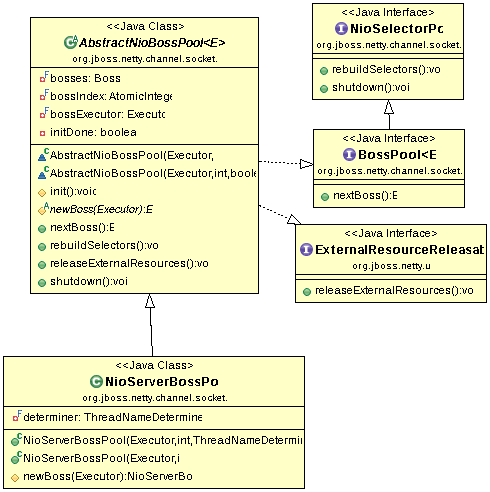
NioWorker and NioServerBoss
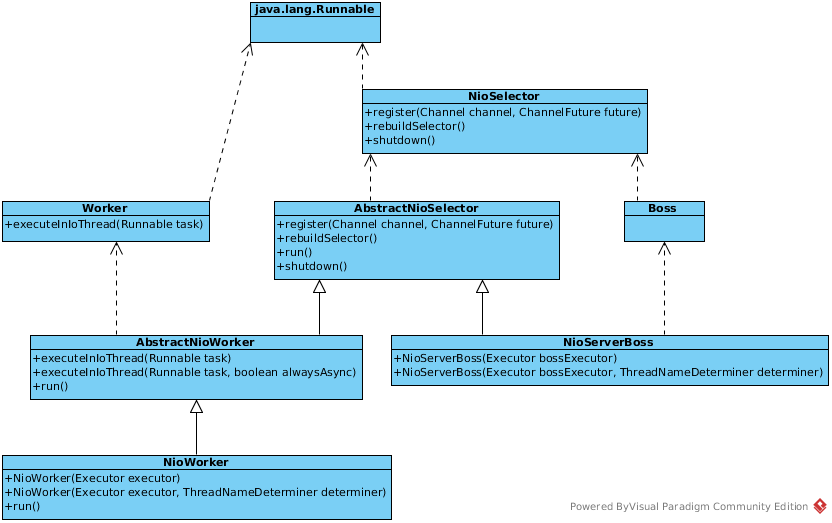
NioServerSocketPipelineSink
